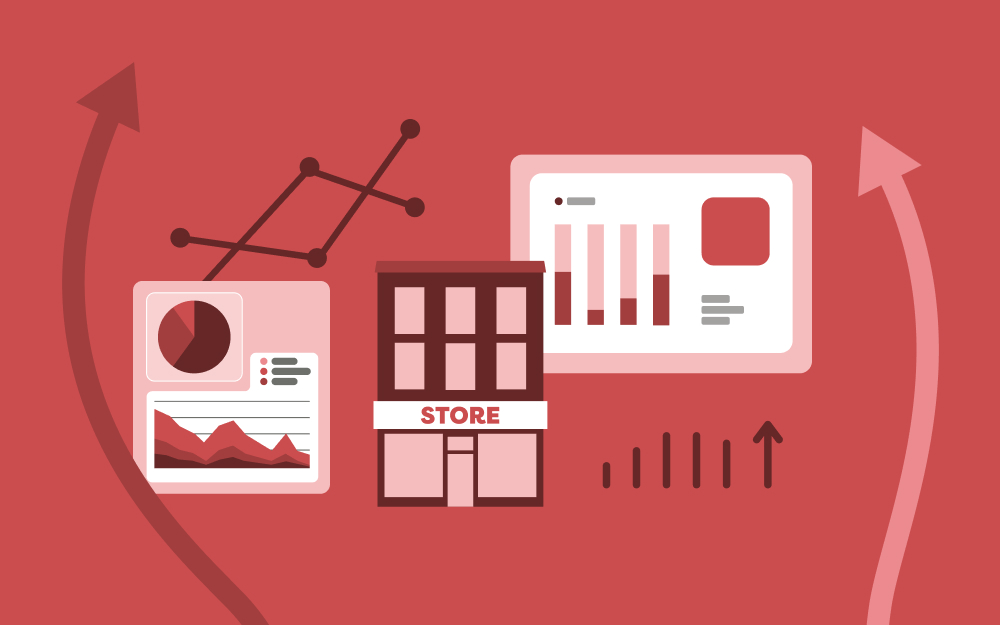Why integrated stock ordering matters.


Received yet another request from your store managers for replacement materials for their in-store displays? Well, this is where integrated stock ordering comes in.
Integrated Stock Ordering in your in-store marketing system allows store managers to order on-brand, campaign-ready marketing materials directly from your print provider, with approval from head office. It is proven to save time, reduce waste and improve campaign accuracy in physical retail.
Done right, integrated stock ordering can be a huge timesaver, so let’s explore how to implement it and the benefits you can expect.
In-store advertising is one of the most effective ways for brands and retailers to promote their products. On average, 80% of retail purchases happen in-store, while up to 82% of buyers don’t make purchase decisions until they enter the store. This presents a significant opportunity for brands and retailers to get their products in front of shoppers and influence their decision.
You can learn more about how to influence buyer purchase decisions in this article.
Overall, this means that getting your in-store advertising right can have a significant impact on revenues. However, working with retailers across the UK, Europe and North America, we found that on average, in-store displays are only 40% accurate.
While many stores may be aware that their displays aren’t quite right, they lack the right implementation, communication, and analysis tools to either identify the issue, report it to head office, or for head office to notice for themselves.
This is where integrated stock ordering can help.
Managing marketing campaigns across multiple stores means dealing with stakeholders across creative agencies, suppliers, printers and your stores. Let’s face it, planning campaigns is a full-time job. The last thing you need is constant calls or emails from stores needing to replace missing, damaged or additional materials. As part of your in-store marketing software or tools, integrated stock ordering enables and empowers your store teams to order their own replacements.
Integrated stock ordering allows head office marketing teams to create a product catalogue full of campaign materials, stock quantities and prices. Then, remote teams can place order requests for you to approve. And it’s not just for in-store campaigns, your product catalogue could include printed marketing materials, promotional merchandise and other GNFR – in a centralised, data-fed system.
You might be a retailer distributing campaigns into hundreds of stores. Alternatively, you might be a brand running activations in retail stores, pubs, restaurants, bus stops or pretty much anywhere you can promote your products.
Your messages may be carried on POS (printed Point Of Sale displays) or other merchandise such as furniture, clothing, glasses… pretty much anything you like. Some may be held in supplier warehouses; others may need to be manufactured to order.
If you’re a retailer, you will have given your store managers marketing plans, including which promotional activity is happening in their stores and how to implement it.
We like to think you will have already used Colateral to create on-brand campaigns and distribute them to stores. And, your locations can use our reporting tools to show they are compliant.
But, if you’re not, we understand how frustrating it can be to have a constant stream of messages across various channels requesting things from HQ to store. And, how hard they can be to keep track of.
We also understand how important localised in-store content is, and how integrated stock ordering can allow your stores to request the most effective marketing materials and other items for their unique location.
For more advice on how to run effective in-store marketing campaigns, check out this article.
If you’re a brand, you will have retail or field salespeople checking in-store displays. They check each store has the right marketing materials to support your activations and product sales.
“Give your people the ability to order what they need whilst controlling your stock and spend.”
Tie that in with local marketing, and you’re giving your stores or field sales people the ability to localise your national activations.
Things get damaged, activations get extended, and so people need more collateral. Stuff happens.
So you need to enable people to order what they need whilst controlling your stock and spending. Store managers should be able to choose and order the materials they need from a list of approved materials for their campaigns. This provides them with the flexibility to order while you maintain control of in-store campaigns, print stock, and store spending.
That’s where Colateral’s integrated Stock Ordering solution comes in. It allows you to open up a multi-supplier product catalogue and make it available for your stores, field salespeople or customers.
Working with retailers across the UK, Europe and North America, Colateral supports more than 10,000 stores to make their in-store marketing flawless.
Paddy Power, one of the UK’s leading gaming brands, operates over 600 stores across the UK and Ireland. Their stores need to promote timely and relevant messaging to drive footfall. In 2018, they sought a solution to increase the accuracy of their displays. By using Colateral, Paddy Power increased the display compliance of in-store marketing campaigns from 42% to 100%.
 Thought Leadership
Thought Leadership
Despite the rise of e-commerce, 80% of purchases still happen in stores. And retailers produce...
 Thought Leadership
Thought Leadership
Stores are the heartbeat of your retail operations. In fact, studies show that in supermarkets,...